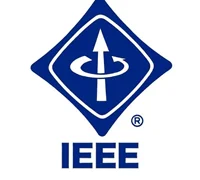دانلود ترجمه مقاله کنترل توان راکتیو و ولتاژ AC سیستم LCC HVDC
| عنوان فارسی |
کنترل توان راکتیو و ولتاژ AC سیستم LCC HVDC با خازن های کنترل پذیر |
| عنوان انگلیسی |
Reactive Power and AC Voltage Control of LCC HVDC System With Controllable Capacitors |
| کلمات کلیدی : |
کنترل ولتاژ AC؛ HVDC با خازن کنترل پذیر؛ انتقال HVDC؛ LCC HVDC؛ کنترل توان راکتیو |
| درسهای مرتبط | کنترل توان راکتیو |
| تعداد صفحات مقاله انگلیسی : 12 | نشریه : IEEE |
| سال انتشار : 2017 | تعداد رفرنس مقاله : 25 |
| فرمت مقاله انگلیسی : PDF | نوع مقاله : ISI |
|
پاورپوینت :
ندارد سفارش پاورپوینت این مقاله |
وضعیت ترجمه مقاله : انجام شده و با خرید بسته می توانید فایل ترجمه را دانلود کنید |
1. مقدمه 2. آرایش سیستم و مفاهیم عملکردی 3. تحلیل نظری کنترل پذیری توان راکتیو 4. کنترل توان راکتیو و ولتاژ AC 5. مطالعات شبیه سازی 6. نتیجه گیری

چکیده – بخوبی می دانیم که سیستم جریان مستقیم فشار قوی (HVDC) برپایه مبدل خط کموتاسیون متداول (LCC) قادر به کنترل توان راکتیو و ولتاژ ترمینال های AC خود نیست. این مقاله، کنترل توان راکتیو و ولتاژ AC در طرف اینورتر سیستم LCC HVDC با خازن های کنترل پذیر را بررسی می کند. توانایی این سیستم در کار تحت زاویه خاموشی منفی برای دستیابی به دامنه گسترده ای از کنترل توان راکتیو و بخصوص توانایی ارسال توان راکتیو، بکار گرفته شده است. در ارتباط با کنترل ولتاژ ترمینال AC اینورتر و توان راکتیو، از جمله قابلیت های کنترل مختلف در طرف یکسوساز، کنترل توان اکتیو مناسب و مطلوب است زیرا تغییرات زیاد انتقال توان اکتیو، بسیار نامطلوب است. تحلیل نظری تفصیلی ابتدا انجام می شود تا کنترل پذیری توان راکتیو نشان داده شود و سطح ولتاژ خازن براساس محدوده کنترل مطلوب انتخاب می شود. علاوه بر آن، یک رویکرد اندازه گیری زاویه خاموشی جدید برای اندازه گیری زاویه خاموشی منفی پیشنهاد می شود. اثربخش بودن قابلیت کنترل توان راکتیو/ولتاژ برای سیستم پیشنهادی از طریق نتایج شبیه سازی با استفاده از «شبیه ساز دیجیتال بلادرنگ» (RTDS) اعتبار یابی می شود. برای تایید اثربخشی کنترل توان راکتیو و ولتاژ، CCC HVDC و LCC HDVC با SVC نیز در RTDS نیز ایجاد و ساخته می شوند و مقایسات شبیه سازی انجام می شوند. علاوه بر آن، مشارکت ادبی در کنترل ولتآژ AC در سیستم قدرت با استفاده از روش پیشنهادی از طریق نتایج شبیه سازی سیستم قدرت AC چهار ماشینی دو منطقه ای اصلاح شده، نشان داده می شود. مقدمه: فنآوری «جریان مستقیم فشار قوی» (HVDC) مبتنی بر مبدل کموتاسیون خط (LCC) سنتی، نقش مهمی در انتقال توان کلی فاصله طولانی در سراسر جهان از اولین کاربردش در 60 سال پیش، ایفا کرده است. ما، تعدادی محدودیت مشخص مرتبط با آن هنوز امروزه وجود دارد که تاحدی کاربردهای بیشتر چنین فنآوری را محدود کرده است. یکی از این محدودیت ها، الزام و نیاز توان راکتیو قابل توجه در هر دو طرف سیستم HVDC می باشد. این الزام و نیاز به توان راکتیو از آتش زدن تریستورها بعد از مثبت شدن ولتاژ کموتاسیون نشات می گیرد که این در اصل شکل موج های جریان را با توجه به شکل موج های ولتاژ، به تاخیر می اندازد [1]. بنابراین، هر دو طرف یکسوساز و اینورتر سیستم، توان راکتیو جذب می کند. اما لازم به ذکر است که برای سیستم AC طرف فرستنده، یکسوساز، یک بار است و طبیعی است که مقداری توان راکتیو از شبکه درست مانند بارهای دیگر، بکشد.
It is well known that traditional line-commutated converter (LCC) based high voltage direct current (HVDC) system is not able to control its reactive power and terminal AC voltages. This paper investigates the reactive power and AC voltage control at the inverter side of the LCC HVDC system with controllable capacitors. The system’s ability of operating under negative extinction angle is utilized to achieve a wide range of reactive power control and, in particular, the ability of exporting reactive power. In connection with the inverter AC terminal voltage or reactive power control, among different control possibilities at the rectifier side, active power control is desirable since large variations of active power transfer is very unfavorable. Detailed theoretical analysis is carried out first to show the reactive power controllability, and the capacitor voltage level is selected based on the desired control range. In addition, a new extinction angle measurement approach is proposed for negative extinction angle measurements. The effectiveness of the reactive power/voltage control capability for the proposed system is validated through simulation results using Real- Time Digital Simulator (RTDS). To verify the effectiveness of the reactive power and voltage control, CCC HVDC and LCC HVDC with SVC are also set up in RTDS, and simulation comparisons are made. Furthermore, contribution to AC voltage control in power system using the proposed method is demonstrated through simulation results of the modified two-area four-machine AC power system. INTRODUCTION: Traditional Line-Commutated Converter (LCC) based High Voltage Direct Current (HVDC) technology has played an important role in long distance bulk power transmission around the world since its first application 60 years ago. However some well-known limitations associated with it still exist today which to a certain extent limit further applications of such a technology. One of the limitations is significant reactive power requirement at both sides of the HVDC system. The reactive power requirement originates from the firing of thyristors after commutation voltage becomes positive, which in effect delayed the current waveforms with respect to the voltage waveforms [1]. So both rectifier and inverter sides of the system absorb reactive power. However it should be noted that to the sending end AC system, the rectifier represents a load and it is natural that it draws some reactive power from the network just like other loads.
بخشی از ترجمه مقاله (صفحه 30 فایل ورد ترجمه)
محتوی بسته دانلودی:
PDF مقاله انگلیسی ورد (WORD) ترجمه مقاله به صورت کاملا مرتب (ترجمه شکل ها و جداول به صورت کاملا مرتب)


دیدگاهها
هیچ دیدگاهی برای این محصول نوشته نشده است.